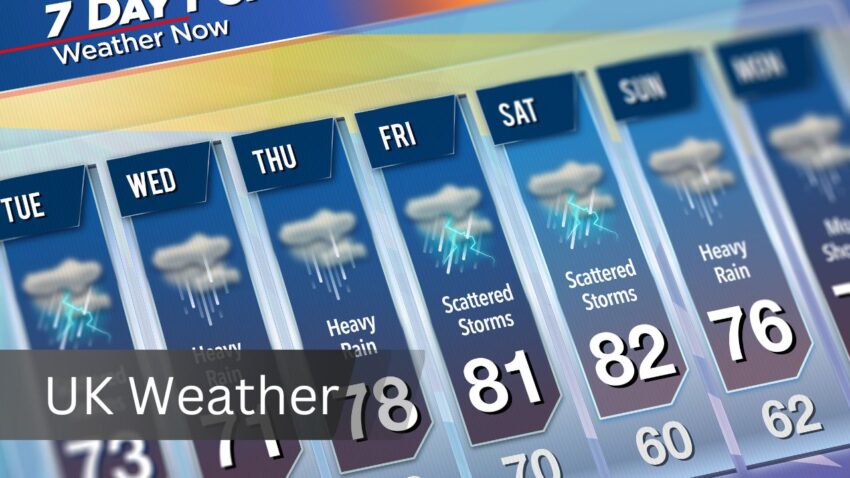The UK has a temperate maritime climate, meaning it generally experiences mild temperatures and high levels of rainfall throughout the year. However, there are regional variations, with the west coast tending to be wetter and milder than the east.
The UK’s average annual rainfall is around 1,150 mm, with the wettest regions in the mountainous areas of Wales and Scotland. The driest regions are generally found in the southeast of England.
What are the Climate Types in the UK?
The UK primarily experiences a temperate maritime climate, which is characterized by mild temperatures and consistent rainfall throughout the year.
What are the Climate Conditions in the UK?
The UK’s climate is moderate, with four distinct seasons. The summers are generally warm, with temperatures averaging between 15-25°C (59-77°F). Winters are cool and can be rainy, with temperatures averaging between 2-7°C (36-45°F). Rainfall is evenly distributed throughout the year, although the west tends to be wetter than the east.
What Fruits Grow in the UK?
Fruits grown in the UK include:
- Apples
- Pears
- Strawberries
- Raspberries
- Plums
- Cherries
What Vegetables Grow in the UK?
Vegetables grown in the UK include:
- Potatoes
- Carrots
- Broccoli
- Cauliflower
- Onions
- Peas
- Beans
Which Months Have the Highest Rainfall in the UK?
Rainfall in the UK is fairly consistent throughout the year, but the wettest months tend to be October, November, and December.
Does it Snow in the UK?
Yes, it does snow in the UK, primarily during the winter months (December to February). However, snowfall is not always widespread and can vary greatly from year to year.
Does it Hail in the UK?
Hailstorms can occur in the UK, but they are not as frequent or severe as in other parts of the world.
How are the Winters in the UK?
Winters in the UK are generally mild, but they can be wet and windy. Temperatures rarely drop below freezing, and snowfall is not always guaranteed. However, the north of the UK tends to be colder than the south.
Where to Go in the UK During Winter?
Popular winter destinations in the UK include:
- London, for its Christmas markets and festive atmosphere
- Edinburgh, for its Hogmanay (New Year) celebrations
- The Cotswolds, for a charming countryside escape
- The Lake District, for its picturesque scenery
Is the UK Cold?
The UK is not considered a cold country, but the temperatures can be cool, especially during the winter months.
What is the Coldest City in the UK?
The coldest city in the UK is often considered to be Braemar in Scotland, which holds the record for the lowest temperature ever recorded in the UK (-27.2°C).
Does it Get Dark Early in the UK?
The UK experiences shorter days during the winter months (December to February), with daylight lasting approximately 8 hours. However, during the summer months (June to August), daylight can last up to 16 hours.
What is the Precipitation Distribution in the UK?
The west coast of the UK receives more rainfall than the east coast due to its proximity to the Atlantic Ocean. Mountainous areas also tend to experience higher rainfall.
What is the Vegetation Like in the UK?
The UK’s vegetation is diverse, with woodlands, grasslands, moorlands, and coastal areas. Deciduous trees like oak, ash, and beech are common, as are various types of wildflowers and shrubs.
What Plants Grow in the UK?
Plants that grow in the UK include:
- Bluebells
- Daffodils
- Foxgloves
- Heather
- Primroses
What are the Temperatures Like in the UK?
The average annual temperature in the UK is around 9.7°C (49.5°F). Summers are generally warm, while winters are cool.
What is the Sea Temperature in the UK?
The sea temperature in the UK varies depending on the location and time of year, but it generally ranges from 6-18°C (43-64°F).
What is the Best Time to Travel to the UK?
The best time to travel to the UK depends on your preferences. Spring (March to May) and autumn (September to November) offer mild temperatures and fewer crowds. Summer (June to August) is the most popular time to visit, with warmer weather and longer days, but it can also be more crowded and expensive. Winter (December to February) is a good time to visit for Christmas markets and festive cheer, but the weather can be unpredictable.

